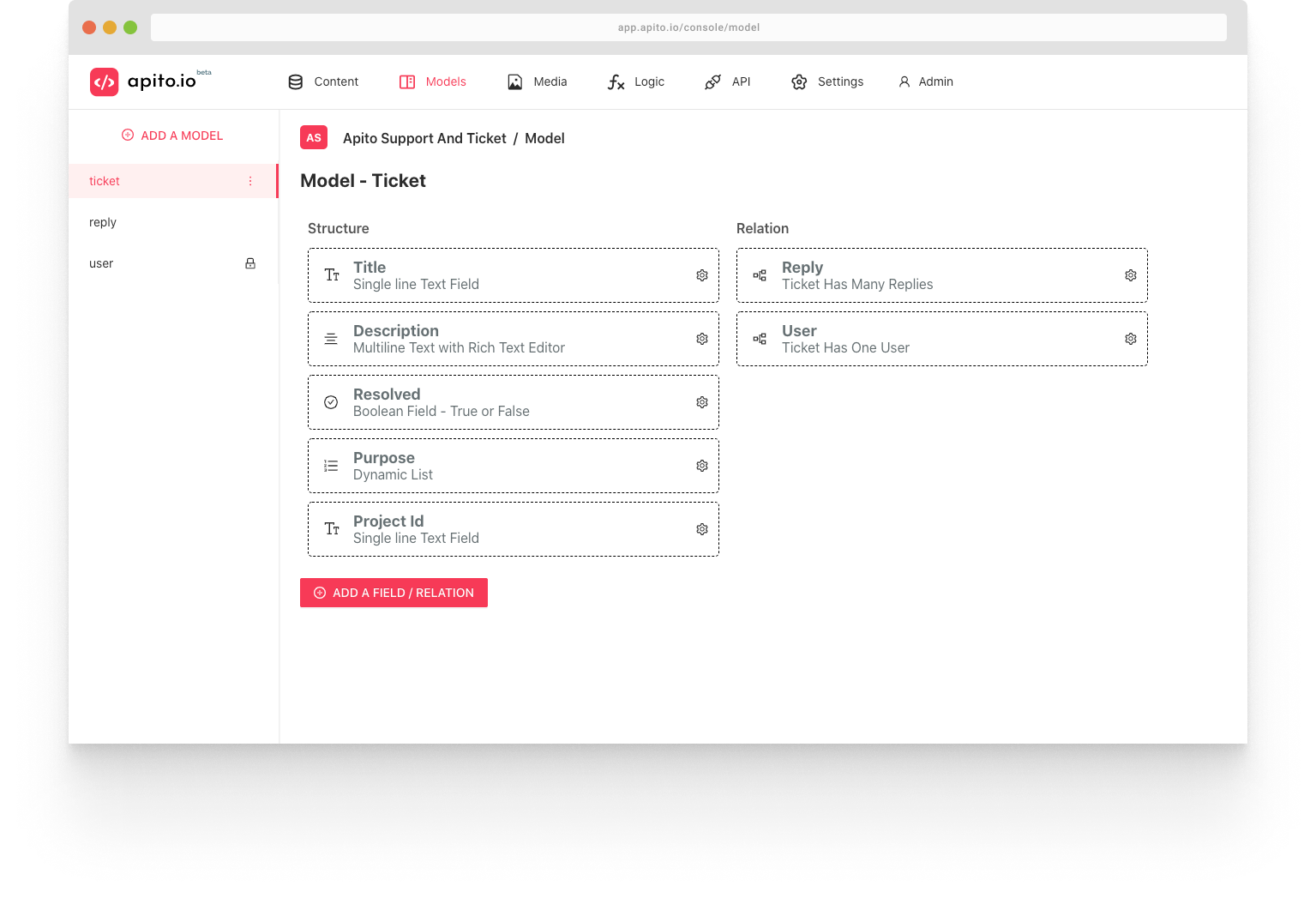Database Design for API Builder Projects
Database design or modeling is the most crucial part of your API builder project. In this article there will be a brief introduction about when and when not to create a data model using our instant API platform, and appreciate fundamental data design techniques for building database APIs. The primary audience for this article is application developers using our build API tool. We hope our guidance should help you adopt an Agile DB approach for your Apito API management project.
A Model represents a Single Entity of your project. If you already know SQL then you can compare it to columns. For example if you are starting an e-commerce project the common models are mostly Products, Orders, Stores, Users, Carts, Reports etc.
If you are designing a library management application the models are most likely to be Books, Authors, Profile, Booking etc.

Separation of Concern (Is it Model or Fields?)
Sometimes designing a database could be challenging. For example if you are designing an Address Book API there might be Profile, Address, User model. You can notice here that an address could also just be a field in Profile model or a Single separate model itself.
So how you define your model entirely depends on your project specification. Some rules you can follow to see if you assumption are right or not when you are creating a model.
- One rule to define model would be,
if your entity contains multiple fields or complex then you can separate it into its own model. - Another suggestion is to consider
if your entity is or will be connected to other entities. For example, if we take the Address entity as example, if it will be connected to other entities then it should become a model or else you can just list it as a part of profile, as a dynamic list.